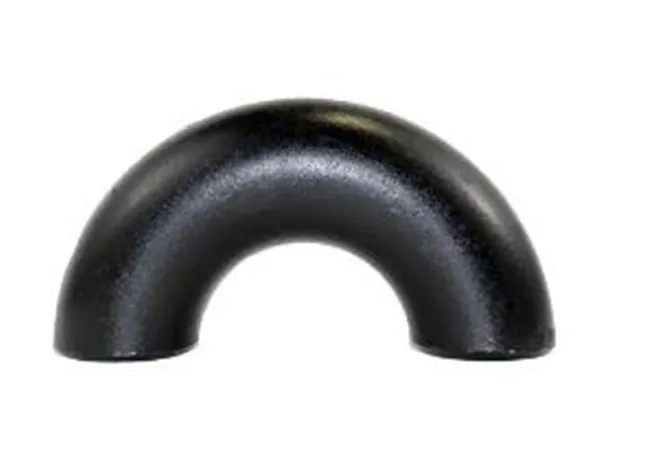-
Cangzhou Yulong Steel Co., Ltd.
-
Phone:
+86 13303177267 -
Email:
admin@ylsteelfittings.com
- English
- Arabic
- Italian
- Spanish
- Portuguese
- German
- kazakh
- Persian
- Greek
- French
- Russian
- Polish
- Thai
- Indonesian
- Vietnamese
- Zulu
- Korean
- Uzbek
- Hindi
- Serbian
- Malay
- Ukrainian
- Gujarati
- Haitian Creole
- hausa
- hawaiian
- Hebrew
- Miao
- Hungarian
- Icelandic
- igbo
- irish
- Japanese
- Javanese
- Kannada
- Khmer
- Rwandese
- Afrikaans
- Albanian
- Amharic
- Armenian
- Azerbaijani
- Basque
- Belarusian
- Bengali
- Bosnian
- Bulgarian
- Catalan
- Cebuano
- China
- China (Taiwan)
- Corsican
- Croatian
- Czech
- Danish
- Esperanto
- Estonian
- Finnish
- Frisian
- Galician
- Georgian
- Kurdish
- Kyrgyz
- Lao
- Latin
- Latvian
- Lithuanian
- Luxembourgish
- Macedonian
- Malgashi
- Malayalam
- Maltese
- Maori
- Marathi
- Mongolian
- Myanmar
- Nepali
- Norwegian
- Norwegian
- Occitan
- Pashto
- Dutch
- Punjabi
- Romanian
- Samoan
- Scottish Gaelic
- Sesotho
- Shona
- Sindhi
- Sinhala
- Slovak
- Slovenian
- Somali
- Sundanese
- Swahili
- Swedish
- Tagalog
- Tajik
- Tamil
- Tatar
- Telugu
- Turkish
- Turkmen
- Urdu
- Uighur
- Welsh
- Bantu
- Yiddish
- Yoruba

Nov . 12, 2024 09:00 Back to list
api 5l x60 psl2
Understanding API 5L X60 PSL2 An Overview
In the world of oil and gas pipelines, standards and specifications play a crucial role in ensuring the safety, efficiency, and reliability of the infrastructure. One of the prominent standards in this field is the API 5L specification, which outlines the requirements for line pipe used in the transportation of oil and gas. Within this specification, one of the common grades is the API 5L X60 PSL2. Understanding what this grade entails is vital for engineers, project managers, and companies involved in the pipeline industry.
What is API 5L?
API 5L is a standard developed by the American Petroleum Institute (API) that specifies the requirements for the manufacturing of welded and seamless steel pipes for use in the transportation of oil, gas, and water in pipeline applications. The 5L stands for Line Pipe, and the standard covers various grades and specifications to accommodate different operational needs and environmental conditions.
The Importance of Grades and PSL
API 5L is divided into various grades, with X denoting the yield strength level. For instance, X60 indicates a yield strength of 60,000 psi or approximately 415 MPa. The grades are crucial for determining the type of materials used, the thickness of the pipes, and their suitability for specific applications.
Moreover, the PSL (Product Specification Level) designates the quality control measures and inspection requirements. There are two levels PSL1 and PSL2. While PSL1 includes basic requirements, PSL2 adds additional testing, quality assurance protocols, and overall stricter standards to ensure the pipe's integrity under more demanding conditions.
Key Specifications of API 5L X60 PSL2
1. Yield Strength As mentioned, API 5L X60 PSL2 has a minimum yield strength of 60,000 psi. This characteristic is crucial for ensuring the pipe's ability to withstand high-pressure environments typically encountered in the transportation of hydrocarbons.
api 5l x60 psl2

2. Chemical Composition The chemical makeup of API 5L X60 PSL2 pipe includes essential elements that provide strength and resistance to corrosion. Carbon, manganese, phosphorus, sulfur, and silicon are among the primary components regulated by the standard.
3. Pipe Dimensions API 5L X60 PSL2 pipes can come in various sizes and wall thicknesses. This versatility allows for tailored solutions based on specific project requirements, whether that be for offshore drilling, onshore pipelines, or even intra-field distribution.
4. Mechanical Properties Besides yield strength, the API 5L X60 PSL2 also addresses characteristics such as tensile strength, impact resistance, and elongation, which are vital for the pipe's performance in real-world conditions.
5. Manufacturing Processes The specification guides the methodologies for producing these pipes, including hot working and cold working processes. The resulting pipes must undergo stringent quality checks to meet the durability and safety standards outlined in the API 5L specification.
Applications of API 5L X60 PSL2
Due to its properties, API 5L X60 PSL2 is widely utilized in several applications within the oil and gas industry. It is ideal for transmission pipelines that transport oil and natural gas over long distances, often buried underground. Its high strength-to-weight ratio allows for the construction of pipelines that can endure harsh environmental challenges, including extreme pressures, temperatures, and corrosive substances.
Additionally, the durability of X60 PSL2 pipes makes them suitable for offshore structures, where mechanical stress and environmental exposure can be significant. The added quality assurance required by PSL2 also provides peace of mind against possible failures during operation, which can have catastrophic consequences.
Conclusion
In summary, API 5L X60 PSL2 is a crucial standard in the pipeline industry, providing a reliable solution for the transportation of oil and gas. Its combination of high yield strength, stringent quality assurance measures, and versatile application makes it a preferred choice among engineers and project managers. As the demand for energy continues to grow globally, the role of API 5L X60 PSL2 pipelines will remain essential in facilitating the safe and efficient transport of hydrocarbons across various terrains. Understanding its specifications and applications is therefore imperative for anyone involved in the development and maintenance of pipeline infrastructure.
Latest news
-
ANSI 150P SS304 SO FLANGE
NewsFeb.14,2025
-
ASTM A333GR6 STEEL PIPE
NewsJan.20,2025
-
ANSI B16.5 WELDING NECK FLANGE
NewsJan.15,2026
-
ANSI B16.5 SLIP-ON FLANGE
NewsApr.19,2024
-
SABS 1123 FLANGE
NewsJan.15,2025
-
DIN86044 PLATE FLANGE
NewsApr.19,2024
-
DIN2527 BLIND FLANGE
NewsApr.12,2024
-
JIS B2311 Butt-Welding Fittings LR/SR 45°/90° /180°Seamless/Weld
NewsApr.23,2024











